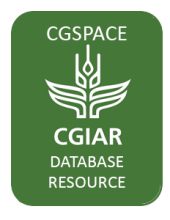/ library resources
Showing items 67852 through 67860 of 73534.Introduction
Recently, issues related to the (perceived) quality of inputs and technologies have been proposed as an important constraint to their adoption by smallholder farmers in low income countries.
Agroforestry-based food systems play a critical role in many dryland regions of the word, including Tunisia. These farming systems offer a range of benefits such as diversification of food and income resources for local communities, biodiversity conservation, and environmental resilience.
Biophysical models are key to inform management activities that can restore degraded soils and ultimately improve biomass production and soil organic carbon (SOC) sequestration.
There is a scarcity of published literature about farmers’ level of knowledge, attitudes, and practices regarding improved forage varieties in East Africa, particularly among the populations where development projects have been and continue to be implemented.
This study analyses the impact of high-quality nutritional grasses in feeding on beef cattle in farms from Córdoba Department, Colombia.
In Colombia, milk yield gaps among dairy systems are large and farms with better feed quality and sustainable cattle management practices are more productive.
The Orinoquia region in Colombia is home to diverse ecosystems, including forests and various agroecological zones, but extensive cattle ranching poses a significant challenge as it contributes to deforestation and threatens the region's valuable forest resources.
In Nicaragua, land use change and agriculture cause 80% of total greenhouse gas emissions, of which more than half are from livestock.
Paginación
Land Library Search
Through our robust search engine, you can search for any item of the over 64,800 highly curated resources in the Land Library.
If you would like to find an overview of what is possible, feel free to peruse the Search Guide.

